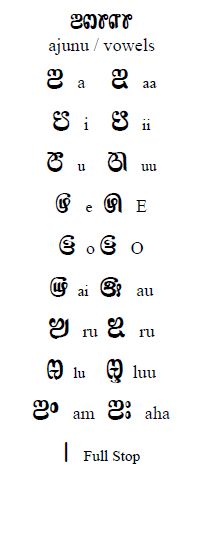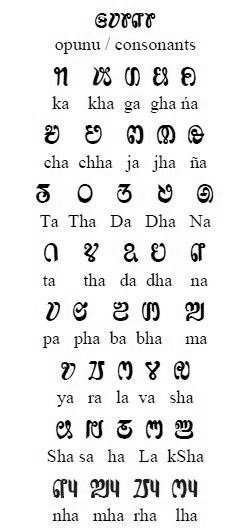Social:Saurashtra language
| Saurashtra | |
|---|---|
| ꢱꣃꢬꢵꢰ꣄ꢜ꣄ꢬ ꢩꢵꢰꢵ சௌராட்டிர மொழி సౌరాష్ట్ర భాష सौराष्ट्र भाषा ಸೌರಾಷ್ಟ್ರ ಭಾಷೆ | |
 Word "Saurashtra" in Saurashtra Script | |
| Native to | India |
| Region | Tamil Nadu, Andhra Pradesh, Karnataka |
| Ethnicity | Saurashtrians |
Native speakers | 247,702 (2011 census)[1] |
Indo-European
| |
Early form | Sauraseni Prakrit
|
| Dialects |
|
| Saurashtra script (Brahmic) Tamil script Telugu script Devanagari script Latin script | |
| Language codes | |
| ISO 639-3 | saz |
| Glottolog | saur1248[2] |
Saurashtra (Saurashtra script: ꢱꣃꢬꢵꢰ꣄ꢜ꣄ꢬ ꢩꢵꢰꢵ, Tamil script: சௌராட்டிர மொழி, Devanagari script: सौराष्ट्र भाषा) is an Indo-Aryan language spoken primarily by the Saurashtrians of Southern India who migrated from the Lata region of present-day Gujarat to south of Vindhyas in the Middle Ages.
Saurashtra, an offshoot of Sauraseni Prakrit,[3] once spoken in the Saurashtra region of Gujarat, is now chiefly spoken in various places of Tamil Nadu and are mostly concentrated in Madurai, Thanjavur and Salem Districts.[4]
The language has its own script of the same name, but is also written in the Tamil, Telugu, and Devanagari scripts. The Saurashtra script is of Brahmic origin, although its exact derivation is not known. Unlike most of the surrounding Dravidian languages, Saurashtra is Indo-European. There is some debate amongst speakers of the Saurashtra language as to which script is best suited to the language.[5] Census of India places the language under Gujarati. Official figures show the number of speakers as 247,702 (2011 census).[6]
Classification
Saurashtra belongs to the western branch of the Indo-Aryan languages, a dominant language family of the Indian subcontinent. It is part of the greater Indo-European language family. It is also classified as being part of a Gujaratic languages that, alongside Saurashtra includes the languages like Gujarati (see SIL Ethnologue).
Etymology
Saura is a Sanskrit term meaning flame or dawn of Surya and the people worshiping Surya or Saura are called as Saurashtrians, the speakers of Saurashtra were once sun worshipers and have built sun temples dedicated to the Hindu deity Surya.[7][8]
Per one school of thought, "Saurashtra" means 100 nations (Sau + Rashtra), but per another school of thought, this is a fractured speech of "Su-Rashtra" and its Prakrit name Sorath, which literally means "good country".[9] Many Sanskrit words are coined from the Prakrit language of Sauraseni or Shauraseni language now called as Saurashtra.[7]
History
The oldest available inscriptions in Saurashtra are found in Mandasaur, which is a city in the Malwa region (present day Madhya Pradesh). The language is the modern living and active form of ancient Sauraseni Prakrit. However, it also shows some similarities with Maharashtri Prakrit, the ancestor of Marathi and Konkani.[3]
Saurashtra was once commonly spoken in the coastal areas of Mahi and Tapti rivers, which extends throughout the Malwa region of Madhya Pradesh and Saurashtra region of southern Gujarat. It was also spoken by the people living along Konkan region, which extends throughout the western coasts of Maharashtra, Goa and Karnataka.[3]
Saurashtra is a amalgamation of various present day Indo-Aryan languages like Marathi, Konkani, Gujarati and the older dialects of Rajasthani and Sindhi. However, the current spoken form of Saurashtra is mixed with the Dravidian languages like Kannada, Telugu and Tamil and it might have originated in 16th or early 17th century.[3]
Geographical distribution
Speakers of the Saurashtra language, known as Saurashtrians, maintain a predominant presence in Madurai, Thanjavur, Salem, Dindigul, Tiruchirappalli, Tirunelveli, Kanchipuram, Ramanathapuram, Kanyakumari, Chennai, Tiruvannamalai and Vellore Districts of Tamil Nadu.[4] They are also present in significant numbers in Tirupati of Andhra Pradesh and Karnataka.[4]
Dialects
In the course of migration, Saurashtrians moved in groups and settled in different regions of South India and that caused a slight dialect variation between each group and is noticeable by a Saurashtrian speaker when interacting with another group. Saurashtra language has two dialects, which are broadly similar, with slight variations.
The two dialects are:
However, there are numerous variations and dialects of the Saurashtra language. The different dialects can be based on the location within northern and southern parts of Tamil Nadu. Those are Madurai, Thanjavur, Salem, Tirunelveli and Kanchipuram dialects and Tirupati dialect of Andhra Pradesh.
Phonology
The phoneme inventory of Saurashtra is similar to that of many other Indo-Aryan languages, especially that of the Konkani language. An IPA chart of all contrastive sounds in Saurashtra is provided below.
| Bilabial | Labiodental | Dental | Alveolar | Palato-alveolar | Retroflex | Palatal | Velar | Glottal | |||||||||
|---|---|---|---|---|---|---|---|---|---|---|---|---|---|---|---|---|---|
| plain | aspirated | plain | aspirated | plain | aspirated | plain | aspirated | plain | aspirated | plain | aspirated | plain | aspirated | ||||
| Stop | voiceless | p | pʰ | t̪ | t̪ʰ | t͡s | (t͡sʰ) | t͡ʃ | t͡ʃʰ | ʈ | ʈʰ | k | kʰ | ||||
| voiced | b | bʱ | d̪ | d̪ʱ | d͡z | d͡zʱ | d͡ʒ | d͡ʒʱ | ɖ | ɖʱ | g | gʱ | |||||
| Fricative | s | ʃ | h | ||||||||||||||
| Nasal | m | mʱ | n̪ | n̪ʱ | ɳ | ||||||||||||
| Approximant | ʋ | ʋʱ | l | lʱ | ɭ | j | |||||||||||
| Trill | r | rʱ | |||||||||||||||
| Front | Central | Back | |
|---|---|---|---|
| High | i | u | |
| Mid | e | ə | o |
| Low | a |
Writing system
Saurashtra script
Saurashtra for most of the part had been an oral language lacking any script of its own. Around the 17th to 18th centuries some attempted to write it in Telugu script. Around 19th century a script was invented. There were attempts to revitalize the script in the latter half of the 19th century, ignoring most of the complex conjunct characters.[11]
The Saurashtra script is an abugida, that is, each letter represents a consonant+vowel syllable. There are thirty-four such letters. An unmarked letter represents a syllable with the inherent vowel [a]; letters can be marked with one of eleven vowel diacritics to represent a syllable with a different vowel. Vowel diacritics are attached to the top right corner of a base letter or written alongside it. There are also twelve letters for writing independent vowels (i.e. word-initial vowels). The four vocalic liquid letters r, ru, l and lu behave in the same way as vowels, so are often included in the vowel class.[5]
Early Saurashtra texts use a number of complex conjunct forms for writing consonant clusters. However, when the script was restructured in the 1880s these were abandoned in favour of a virama diacritic, which silences the inherent vowel of the first consonant in a cluster.[5]
The script uses a letter called upakshara, a dependent consonant sign which attaches nasals and liquids to aspirate them. That is, the letter m with upakshara attached represents [mha]. An aspirated nasal or liquid which is followed by a vowel other than [a] is written with the vowel diacritic attached to the upakshara, not to the base letter. Some analyses of the script classify aspirated nasal and liquids as a separate set of single discrete letters divided into two parts.[5]
There is a script-specific set of numbers 0–9, some of which closely resemble Devanagari digits. The widely attested Indic punctuation marks danda and double danda are used to mark the end of a sentence or clause. Latin comma, full stop and question mark symbols are also used.[5]
The letter order of Saurashtra script is similar to other Brahmic scripts. The letters are vowels, consonants, and the compound letters which are formed essentially by adding a vowel sound to a consonant.
Vowels
Consonants
Compound letters
Numerals
Devanagari script
Recently, Saurashtrians adopted Devanagari Script for writing.[12] The alphabet chart containing vowels, consonants and the compound letters in Devanagari script are as follows:
Limitations
Firstly, Devanagari script is not developed by the Saurashtrians. Secondly, even if Devanagari script is adopted to write Saurashtra language, it will look like a bleak literature and would not be developed further, as it cannot be used among the people currently living in a State not of their own and it would not include the Dravidian features of the language.[7][better source needed]
Loanwords
The language itself is more similar to modern day Gujarati and Marathi as both originated from Prakrit. However, in the course of migration to South India, the language was influenced by Dravidian Languages such as Telugu and Kannada and accumulated words from those language in its vocabulary as loanwords.
| English | Saurashtra loanword | Donor-language word |
|---|---|---|
| "Rasam" (Tamarind extract) | Pilchar | Charu (Telugu) |
| Read/ Study | Cheduvi | Chaduvu (Telugu) |
| Mirror | Adhham | Adhham (Telugu) |
| Flattened rice | Adkul | Atukulu (Telugu) |
| Shop | Angadi | Aṅgaḍi (Kannada) |
| Rangoli | Muggu | Muggulu (Telugu) |
| Cloth | Bottal | Batte/Battalu (Kannada/ Telugu) |
| Swallowing | Mingi | Miṅgaḍamu (Telugu) |
| Jump | Dhungi/Dhumki | Dumuku (Kannada/ Telugu) |
| Scratch | Giktha | Gīkuḍu (Telugu) |
| Vehicle | Bondi/Bandi | Bandi (Kannada/ Telugu) |
| Children | Pillan | Pillalu (Telugu) |
| Way | Vaat | Vaat (Gujarati / Marathi ) |
| Punch (blow with the fist) | Guddhu | Guddhu (Kannada/ Telugu) |
| Sprinkles | Chinkul | Chinukulu (Telugu) |
| Drop | Bottu | Bottu (Kannada /Telugu) |
| Work | Kaam | Kaam (Gujarati/ Marathi/ Hindi) |
| Monkey | Kothi | Kothi (Telugu/ Kannada) |
| Milk | Dhoodh | Dūdha (Gujarati) |
| Water | Pani | Pāṇī (Gujarati) |
| Cow | Gaaye/Goru | Gaay (Gujarati), Gaaye (Hindi/ Marathi) |
| Who | Kon | Kōṇ (Marathi/ Gujarati) |
| Out | Bharad | Bahāra (Gujarati) |
| Come | Aav | Āvō (Gujarati) |
| Do | Ker | Karā (Marathi), Kar (Gujarati) |
| Go | Jha | Jā'ō (Gujarati) |
| Home | Gher | Ghar (Gujarati) |
| Rice | Bath | Bhāt (Gujarati, Marathi) |
| No | Nokko | Noko (Marathi) |
| Sour | Ambad/Ambut | Amlo(Sanskrit) / Ambot (Konkani) |
| Spicy | Thikke | tīkhaṭ (Marathi), Tīkhu (Gujarati) |
| Curry | Amti | Amti (Marathi) |
| Fog/Snow | Manchu | Man̄cu (Telugu) |
Dress Botto Bottan (dresses)
Magazines
In recent times, the rising awareness about Saurashtra language among the young generation has led to the publication of magazines. The following are the list of magazines currently published-[9]
- Bhashabhimani
- Sourashtratime e-journal
- Zeeg
- Sonnu Kodum
- Sourashtra Mithran
- Sourashtra Samachar
- Saurashtri turni
Literature
The literature of Saurashtra is not as large as the literature of other literary languages such as Sanskrit, Tamil and Telugu. The earliest available Saurashtra literature that survives to this date is the Saurashtra translation of the great Sanskrit epic of Ramayana. It was written by Venkatasoori Swamigal (1800 AD), a Sanskrit scholar and disciple of Venkataramana Bhagavathar who lived in Ayyampettai of Thanjavur district.[13]
Other important literary works in Saurashtra are:
- Bhagavad Gita (Bhagavat Giito) 1953 AD – written by T.R.Padmanabhaiyer
- Tirukkural (Saurashtra Thirukural Payiram—Pitika Pragaranam) 1980 AD – translated by Sankhu Ram[14]
- Mahabharata (Paandavun Khetho) 2013 AD – written by Kasin Anantham[15]
- Silappatikaram 2018 AD – translated by S.D.Gnaneswaran[16]
Besides Tirukkural, Sankhu Ram has done many literary works in Saurashtra like Gnanamritha Geetham, Shiddhashrama Prabhaavam and so on. The first Saurashtra dictionary was brought out by T.M. Rama Rai, the author of Vachana Ramayana, in 1908. It was printed in Saurashtra script and was in the form of slokas. Apart from these he is also credited for Niti Sambu and Natanagopala Nayaki Swami's Kirthanas.[11]
The Sahitya Akademi Award is given to authors writing in the Saurashtra language since 2007. A former Sanskrit Professor of Sourashtra College in Madurai, T.R. Damodaran won the award for his book Jiva Sabda Kosam, a compilation of 1,333 Saurashtra words with English and Tamil meanings. However, Saroja Sundararajan, was also awarded for Yogendran Monnum Singaru Latun (in Tamil, 'Yogendra Thalaivarkalin Manathiley Ezhuntha Azhagiya Alaigal'), a rendition of works of Adi Sankara's Soundaryalahiri, Kanagadhara stotra and Mahishasuramarthini stotra, Natana Gopala Nayagi Swami's 'Mooschi Deshad,' 'Subramanian Mahatmiyam' and songs of Sai Baba.[13]
Learning Saurashtra
Saurashtra Language is often learnt by speakers from the community members as self-learning resources are not common. Constant efforts have been made by scholars of Saurashtra Language to preserve the language, and provide opportunities for others to learn. Attempts such Saurashtra Dictionary try to make uncommon Saurashtra words accessible by providing equivalent words in languages such as English, Hindi, and Tamil that speakers might be familiar with.
Saurashtra Course in the language learning app, Memrise helps makes learning Saurashtra accessible to English speakers, with the words in Havard-Kyoto notation, and words pronounced by native speakers.
See also
- Saraostus
- Saurashtra Kingdom
- Saurashtra (region)
- Saurashtra (state)
- Saurashtra people
- Saurashtra script
- Saurashtra (Unicode block)
- Gujarati languages
References
- ↑ "Statement 1: Abstract of speakers' strength of languages and mother tongues – 2011". Office of the Registrar General & Census Commissioner, India. http://www.censusindia.gov.in/2011Census/Language_MTs.html.
- ↑ Hammarström, Harald; Forkel, Robert; Haspelmath, Martin, eds (2017). "Saurashtra". Glottolog 3.0. Jena, Germany: Max Planck Institute for the Science of Human History. http://glottolog.org/resource/languoid/id/saur1248.
- ↑ 3.0 3.1 3.2 3.3 Paul John, Vijaysinh Parmar (2016). "Gujaratis who settled in Madurai centuries ago brought with them a unique language – Times of India". The Times of India. https://timesofindia.indiatimes.com/india/Gujarat-weavers-who-settled-in-Madurai-centuries-ago-brought-with-them-a-unique-language/articleshow/52927461.cms.
- ↑ 4.0 4.1 4.2 4.3 4.4 "Saurashtra" (in en). Ethnologue. https://www.ethnologue.com/18/language/saz/.
- ↑ 5.0 5.1 5.2 5.3 5.4 "Script Description [Saurashtra"]. ScriptSource. http://scriptsource.org/cms/scripts/page.php?item_id=entry_detail&uid=ypnsb92h4z.
 Material was copied from this source, which is available under a Creative Commons Attribution-ShareAlike 3.0 Unported license.
Material was copied from this source, which is available under a Creative Commons Attribution-ShareAlike 3.0 Unported license.
- ↑ "Statement 1: Abstract of speakers' strength of languages and mother tongues – 2011". Office of the Registrar General & Census Commissioner, India. http://www.censusindia.gov.in/2011Census/Language_MTs.html.
- ↑ 7.0 7.1 7.2 Ramesh, T.A (2018). "The Possibility of Developing an Oldest Language!". Boloji. http://www.boloji.com/articles/50184/the-possibility-of-developing-an-oldest-language.
- ↑ Ramaswamy, Vijaya (5 July 2017) (in en). Migrations in Medieval and Early Colonial India. Routledge. pp. 172–190. ISBN 9781351558242. https://books.google.com/books?id=5CYxDwAAQBAJ.
- ↑ 9.0 9.1 Sapovadia, Vrajlal K. (3 April 2012). "Saurashtra: A Language, Region, Culture & Community" (in en-US). Sapovadia's Blog. https://sapovadia.wordpress.com/2012/04/03/saurashtra-a-language-region-culture-community/.
- ↑ Colin Masica, 1993, The Indo-Aryan Languages
- ↑ 11.0 11.1 R. V, SOWLEE (2003). "The Hindu : Saurashtra dictionary". http://www.thehindu.com/thehindu/br/2003/04/29/stories/2003042900120300.htm.
- ↑ Venkatesh, Karthik (10 June 2017). "Of little-known Indian languages and scripts". Livemint. https://www.livemint.com/Sundayapp/LMYI4kleFWlpfp9QmeL7FP/Of-littleknown-Indian-languages-and-scripts.html.
- ↑ 13.0 13.1 Kolappan, B. (24 December 2016). "Akademi award for TN writers who revived Sourashtra literature" (in en-IN). The Hindu. ISSN 0971-751X. http://www.thehindu.com/news/cities/chennai/akademi-award-for-tn-writers-who-revived-sourashtra-literature/article16936860.ece1.
- ↑ Staff Reporter (22 May 2017). "Set up Thirukkural research centre" (in en-IN). The Hindu. ISSN 0971-751X. http://www.thehindu.com/todays-paper/tp-national/tp-tamilnadu/set-up-thirukkural-research-centre/article18522481.ece.
- ↑ "Mahabharatha in Saurashtra language" (in en-IN). The Hindu. 25 April 2013. ISSN 0971-751X. http://www.thehindu.com/todays-paper/tp-national/tp-tamilnadu/mahabharatha-in-sourashtra-language/article4652672.ece.
- ↑ Kolappan, B. (18 May 2018). "A Tamil classic translated into Sourashtra" (in en-IN). The Hindu. ISSN 0971-751X. https://www.thehindu.com/news/national/tamil-nadu/a-tamil-classic-translated-into-sourashtra/article23919603.ece.
External links
| Saurashtra language test of Wikipedia at Wikimedia Incubator |
 |







